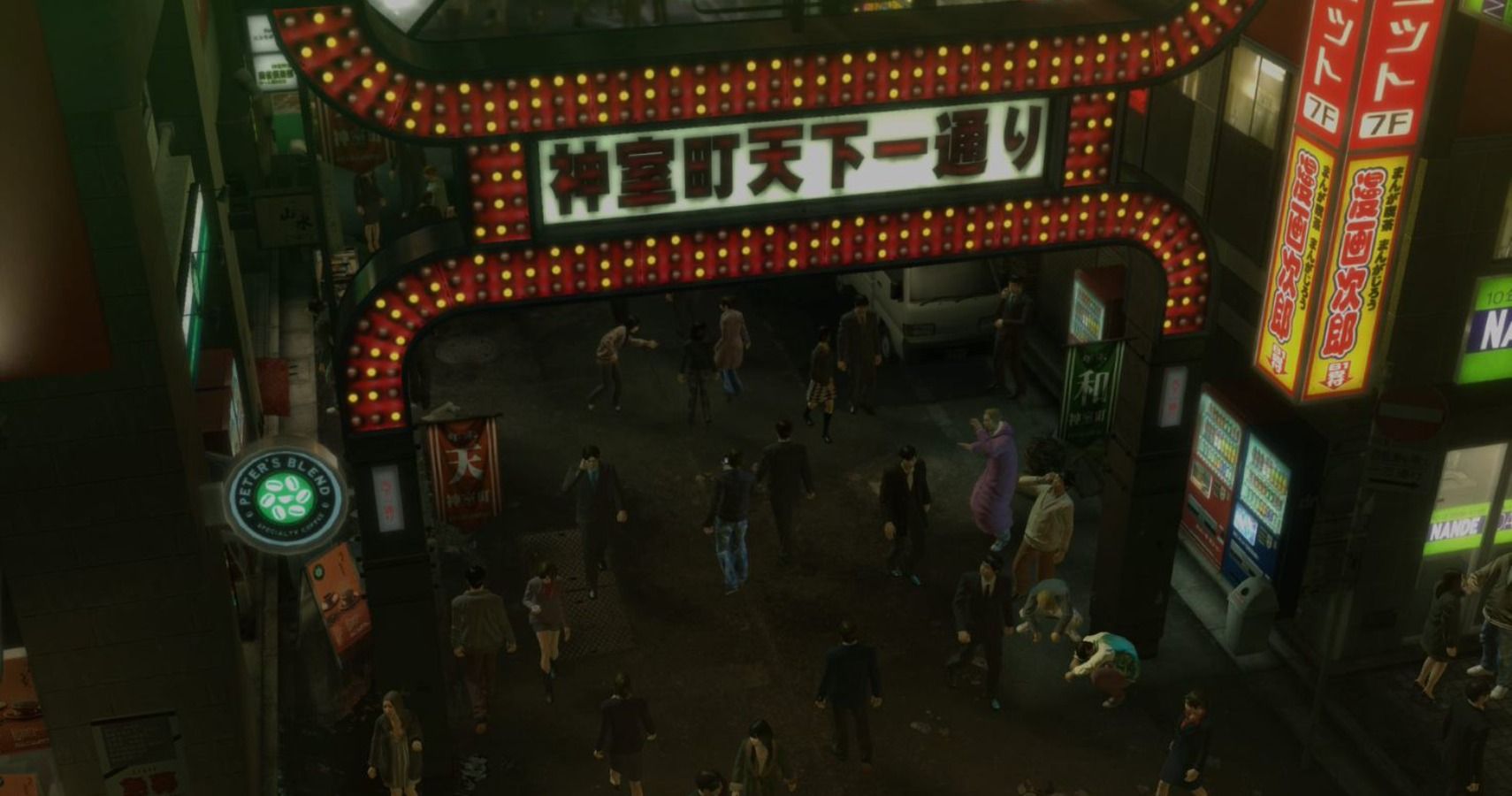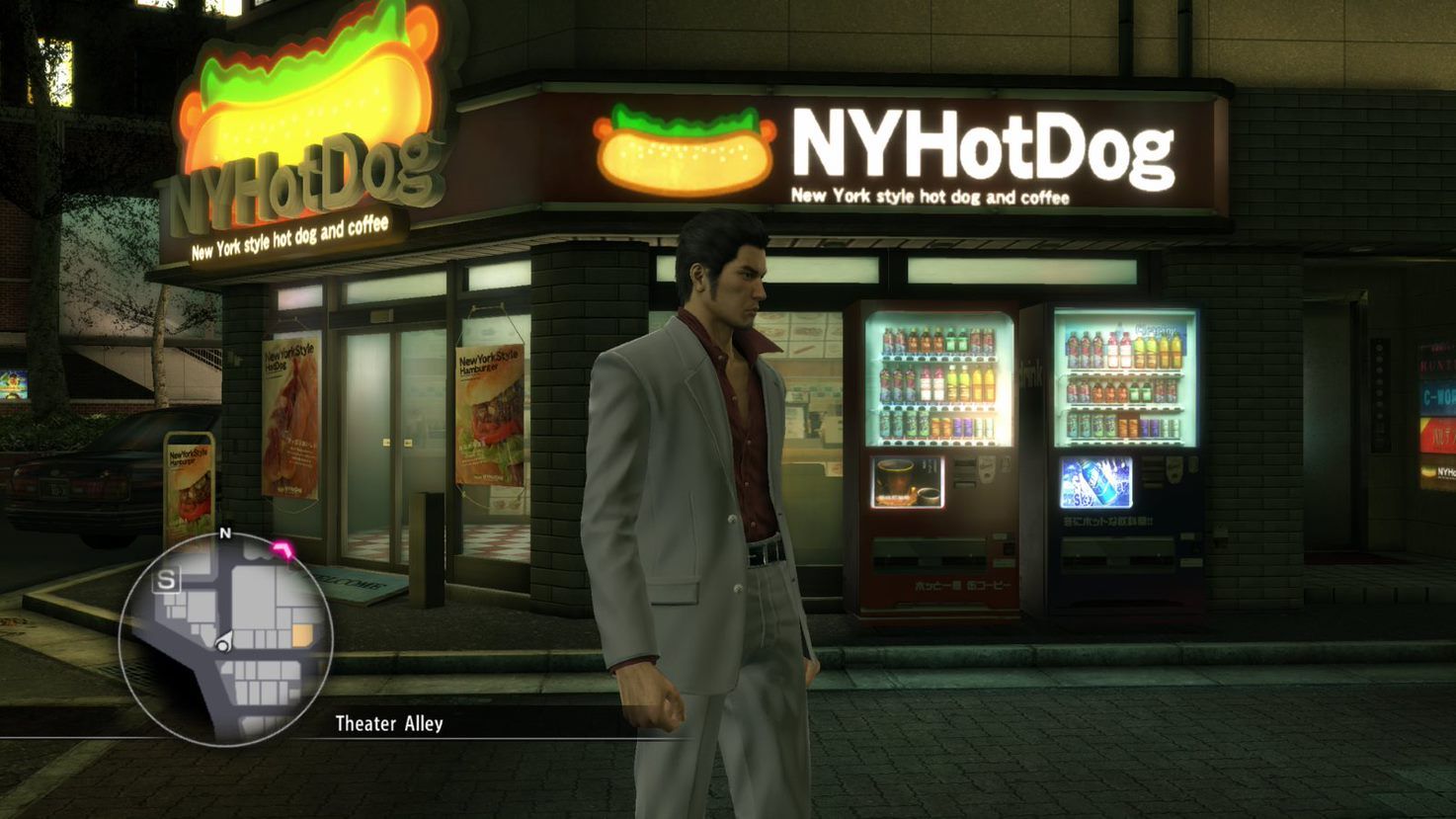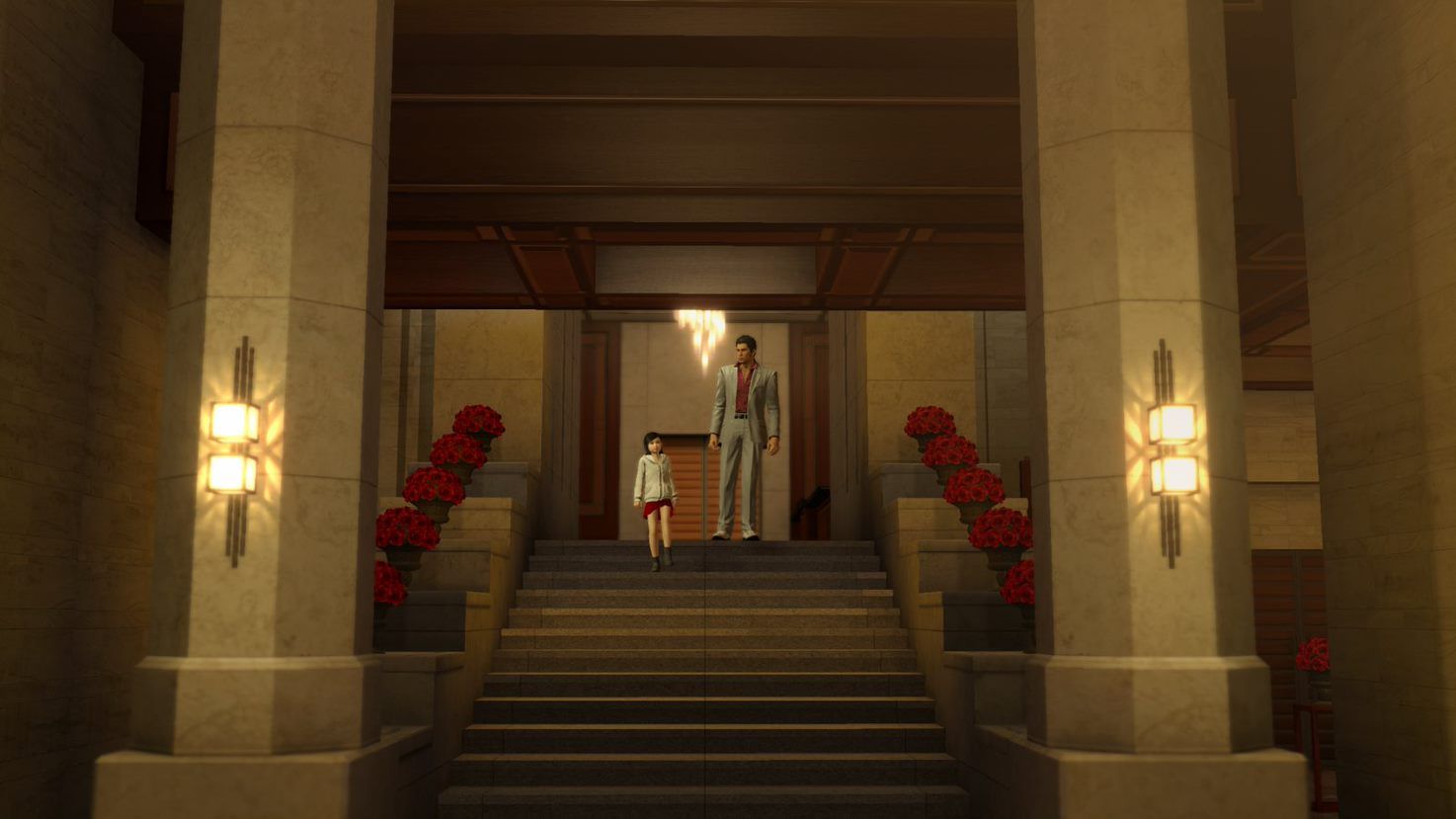After ten long years in the slammer, Kazuma Kiryu is pretty weirded out by mobile phones. The world progressed quite a lot between 1995 and 2005 - Y2K, the phenomenon where tech was supposed to finally clap back at its creators, famously didn’t happen bang smack in the middle of Kiryu’s jail time.
But, over time, Kiryu can adapt and get used to a mobile phone. The real sense of alienation in Yakuza Kiwami comes from being told that there’s a new nightclub across the street from Serena called Stardust. There’s a New York burger joint around the corner from Theater Square and the Empty Lot has finally been put to use as the location for Tokyo’s skyscraping Millennium Tower. Even the Italian restaurants are in English instead of Japanese, or, you know, Italian.
I see it at home all the time. Although most of the older buildings in Dublin are protected by the government, you still see culturally significant ones customarily being torn down for hotel space. It’s probably worth mentioning that Kamurocho’s entire upper area in Yakuza is the Hotel District, which becomes significantly more anglicized between 0 and Kiwami. It’s also the location of the substory about a worker who gets really depressed and comes here because, contrary to the monumental buildings and bright lights, it’s the most grim part of the city - a shell of its former self that’s been beaten hollow by wads of cash.
I should probably state that Yakuza’s Kamurocho is an amazingly well-realized virtual city. It feels authentic and lived-in, and I found a lot of solace in digital tourism as I played Yakuza 0 during lockdown. That being said, it seems obscene to deny that Toshihiro Nagoshi had ideas about how Tokyo has changed over the years in mind when he made Yakuza Kiwami. I mean, obviously he did. He’s depicting a ten-year shift in a virtual replica of a real city in real time. It needs to be brazen to be effective - and it is.
For what it’s worth, I’m specifically talking about Yakuza Kiwami here, the 2016 remake of the first Yakuza game from 2005. If you’re playing the series in chronological order, its critique of modern globalisation is far more pronounced - you aren’t just getting a glimpse at 1995 Kamurocho before Kiryu is shipped off to prison. You’ve got the entirety of 0 behind you, a whole version of this city locked ten years in the past and steeped in its own cultural identity. There are areas here that still feel the same - the Champion District, ever resistant to change as seen in the early Tachibana Real Estate stories from 0, is largely untouched. Stubborn bars still open the same doors with closed signs on them while street thugs hang out in tiny alleyways away from both the law and the Yakuza.
But, by and large, this is a city that has undergone serious change. It’s the equivalent of a family restaurant serving local cuisine being bought out by McDonald’s - an unavoidable aspect of contemporary corporate culture, but a horrible one. If you play 0 and go straight into Kiwami, you’ll see English buzzwords plastered all over storefronts for shit food. I think this alone is pretty brazen, but I understand that this is a game about one of the most notorious criminal organizations of all time, so maybe you aren’t going around scanning every shop window like I am.
It’s irrefutable, though. Just look at the Yakuza 0 map next to the Yakuza Kiwami one. You can actually see the breaks between buildings, highlighting that not a lot of construction has taken place. Sure, ownership may have shifted, but there are still eight street-facing buildings on Tenkaichi Street, all with the same floor space as they had in 0. You can’t go into all of these buildings, but that hardly matters - they’re strictly there for architectural purposes.
Now consider the Millennium Tower, the massive ode to contemporary corporate greed inanely erected in the heart of Kamurocho. It’s a vulgar building, a true testament to how gross expensive sheen looks in the middle of actual culture. Yakuza 0 revolves around the Empty Lot, an ostensibly meaningless piece of land that quickly becomes the most sought after property in the city. People lose their lives to this land in more ways than one, some being dealt fates worse than death - and for what? A tall building with a stupid name and far too many escalators?
It’s obnoxious. The Millennium Tower casts its shadow over the entire city beneath it, its central location allowing it to be indiscriminate in its dominion over the small business owners who cooked takoyaki and served Suntory whiskey to the sound of smooth jazz long before it was even a blueprint. It’s got that stupid corporocratic name as well - it sounds like something out of Star Wars, and yet there it stands in the heart of Tokyo. It’s worth noting that the Millennium Tower was the name of a skyscraper envisioned for Tokyo Bay in 1989 that was never built - I wonder if Nagoshi is imagining an even more globalised Tokyo with fictional Kamurocho.
It’s just jarring. Spending dozens of hours in Yakuza 0 before being propelled ten years into a very different future allows you to genuinely feel how weird this is. There’s a Margaret Atwood quote that I think is relevant here - “Nothing changes instantaneously. In a gradually heating bathtub you’d be boiled to death before you knew it”. If Kiryu changed alongside Kamurocho he obviously wouldn’t see it the way he does now, but after ten years away from it all, the difference is stark. We often talk about technology and how it changes the world. My grandparents can still barely use a mobile phone - although they’re getting better and can “Love” react to my Facebook posts now, which they often do (I am only still on Facebook for them). But it’s the less brazen stuff that’s actually alienating, and I think Yakuza Kiwami is really eloquent in its articulation of that. It’s the ostensibly gradual but actually very impactful changes to a landscape that make it feel like it’s less than before - bigger, but not better. The shithole Empty Lot with spilled bins and stained concrete had far more character than the hollow shopping mall erected over it. Even as a narrative point, the Empty Lot had this deep level of intrigue and mystery. I went to the bar at the top of the Millennium Tower yesterday and thought, “For fuck’s sake, 60 floors?”
I mean, Yakuza Kiwami came out a year after Yakuza 0. It was specifically designed as a remaster of the first game that could match 0’s quality. But playing it in chronological order, as opposed to being a fan for years who played 0 after 5, the move to Kiwami feels strange in several ways. Seeing Majima as a goofy guy you fight against a la Mr. Shakedown is odd after having played half a game as him. Having Kazama-san be actually present in the story as opposed to some mysterious character you only see in photos and flashbacks is definitely weird.
But most of all, it’s Kamurocho - not just that it’s changed, but how it’s changed, and the context of that change. The stakes of 0 amounted to a big tower with a silly name. Don’t get me wrong, I love Kiwami - I think the writing is phenomenal and the stories it tells are the most human ones I’ve seen in video games, just like 0 before it. But it’s because the writing is good that this critique works and feels intentional. Sure, if you’re playing the original Yakuza game, or Kiwami without the context of 0, the ten-year shift might seem like an easy-to-dismiss narrative device. You’ve hardly even explored Kamurocho by the time you’re wrongly convicted of murder and sentenced to ten years in the slammer.
But going into it straight off the back of 0 means that this is a city that, just like Kiryu, you grew to love. Now, ten years later, you can know your way around without needing a map but still feel as if you’re somewhere alien, somewhere different. Some of the old Kamurocho has endured - I was unsurprised to see Don Quijote parked just off Tenkaichi Street considering that it’s a titanic corporation. The context of this reinforces my thoughts about all of this being intentional and pointed.
I think it’s poignant that so much of the story in Kiwami - at least for the first few hours - is about Kiryu having to regain his strength. He’s rusty after spending time in the clink, and he needs to sharpen his wits all over again. But I’ve been far more struck by his attempts to reckon with this new place, this area he knew like the back of his hand that’s permanently altered now. Kazuma Kiryu was feared and revered in Kamurocho as the Dragon of Dojima. I reckon he knows he can learn how to punch people again - the bigger issue is that he has no idea where he is in this gross microcosm of modern globalisation.




